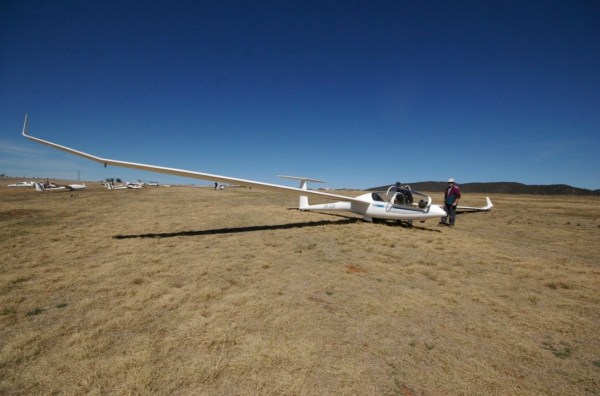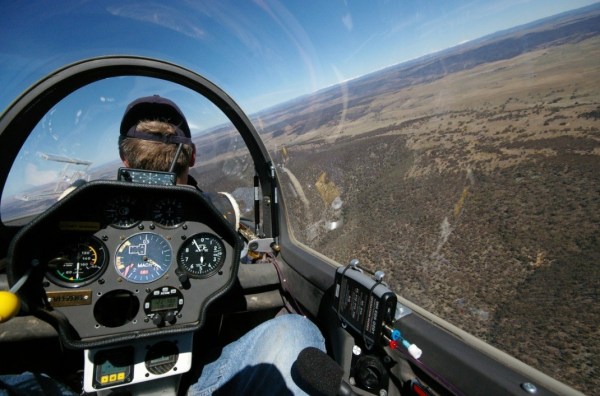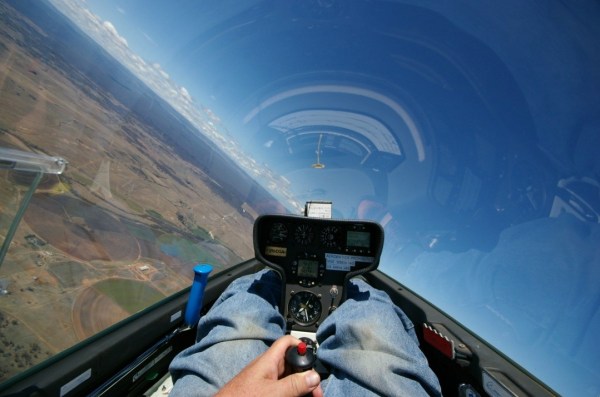
Down Kosciuszko way on many a perfect day the Bunyan wave, the local name for the lenticular clouds that often form over the ranges south of Canberra, brings out the gliders.
They find the ripples and thermals that lift them so high that sometimes they approach the flight paths of the highest flying turbo-props and the lowest flying jets using the south-eastern air corridors.
However the Bunyan wave, and its like wherever gliders come out to play, have also brought out doctrinaire bureaucrats, in pursuit of universal codes of control that can be applied with equal rigor to the scheduled movement of airliners and the impulsive and individualistic flights of recreational aviators.

It is, for students of public administration, yet another conflict between the bureaucratic and political tendencies to conformity and enforcement, versus the merits of minimizing rules or restrictions. Or between ‘open skies’ and ‘closed minds’, to lurch into the oversimplications that plague cultural warfare.
Whatever. It is such an amazing contrast, to sit in a ‘glass’ cocoon in a glider, able to see as far as the rugged ranges extended, traced with old snow drifts, or sometimes deeply mantled, and gaze over the nearer rivers and gorges and sweeping high plains, instead of being packed tight in a torture tube, getting a glimpse of sky, or wing.

If we could ask the early aviators what they thought, of the contrast between modern minimalist flight (and there is little less minimal in controlled flight than an unpowered glider) and the dazzling complexity of modern mass transport airliners, they might yet express astonishment at the complexity of a contemporary glider.
Because what passes for minimal instrumentation on a modern glider is in truth, quite sophisticated and very helpful, and much more so than was available in many propeller airliners until at least the middle of the last century.

But the riders of the Bunyan waves, the recreational glider pilots who on a good day can easily soar above 20,000 feet, and sometimes above 24,000 feet and higher, are now on a metaphorical collision course with bureaucracy.
Australia is right at the forefront of innovations in safer, more comprehensive, indeed universal management of air space (nothwithstanding some evidence of questionable air traffic controller training).
And CASA, in keeping with ICAO agendas, is keen to have this one-technology-fits-all approach enforced through the compulsory use of what is called automatic dependent surveillance-broadcast or ADS-B equipment on just about everything that humans fly, including the unpowered machineries of joy that ride the likes of the Bunyan Wave.
And this is expensive, and arguably contrary to improved safety outcomes, and controversial among the ranks of recreational aviators of almost all descriptions. A summary of the logical benefits of ADS-B can be read here. But it will cost around $4500-$6000 to buy and install on a typical high performance glider, compared to around $1500 for a lighter, simpler, and more glider and sports aviation specific suite such as in the FLARM system.
There are only a few days left before the consultative process between CASA and recreational aviation moves on to the final rule making stage.
The main problems with fitting the proposed mandatory ADS-B technology to gliders is that when a group (or even a flock) of them are riding the same waves or thermals, the collision or conflict alerting system will be compromised by overlapping warnings.
If I understand the debate correctly, there is a great deal of support in recreational aviation for the intended ADS-B technology outcomes, but not for an authoritarian one scope-fits-all application that has so far been lacking in risk analysis and risk justification. The driving force appears to be for Australia to claim international kudos for an ideological and universal application of the technology upfront, no matter what the costs compared to a more progressive and layered integration of non-radar dependent navigational technology in its airspace.
This is one response seen on some discussion boards and at the Canberra Gliding Club web site.
A serious comment – most recreational, GA and glider pilots actually do want safer skies, want to behave professionally and want sensible technology change – we want to share airspace with the big boys and uphold high standards of airmanship and situational awareness. Sometimes technology and in-flight cockpit distraction devices can subtract from safety. Power failures from flat batteries from inappropriate technologies will subtract from safety. Single technology policies will only stifle development of alternative and interoperable technologies that might actually provide better safety. NOTHING replaces a good lookout!
The monolithic bureaucratic approach is definitely not going down well at the level of individual recreational aviation enthusiasts.
To understand this better, go gliding. (Or surfing. Or off-piste skiing. Or somewhere where the way is not a path way nor a set of rules.)







Crikey is committed to hosting lively discussions. Help us keep the conversation useful, interesting and welcoming. We aim to publish comments quickly in the interest of promoting robust conversation, but we’re a small team and we deploy filters to protect against legal risk. Occasionally your comment may be held up while we review, but we’re working as fast as we can to keep the conversation rolling.
The Crikey comment section is members-only content. Please subscribe to leave a comment.
The Crikey comment section is members-only content. Please login to leave a comment.